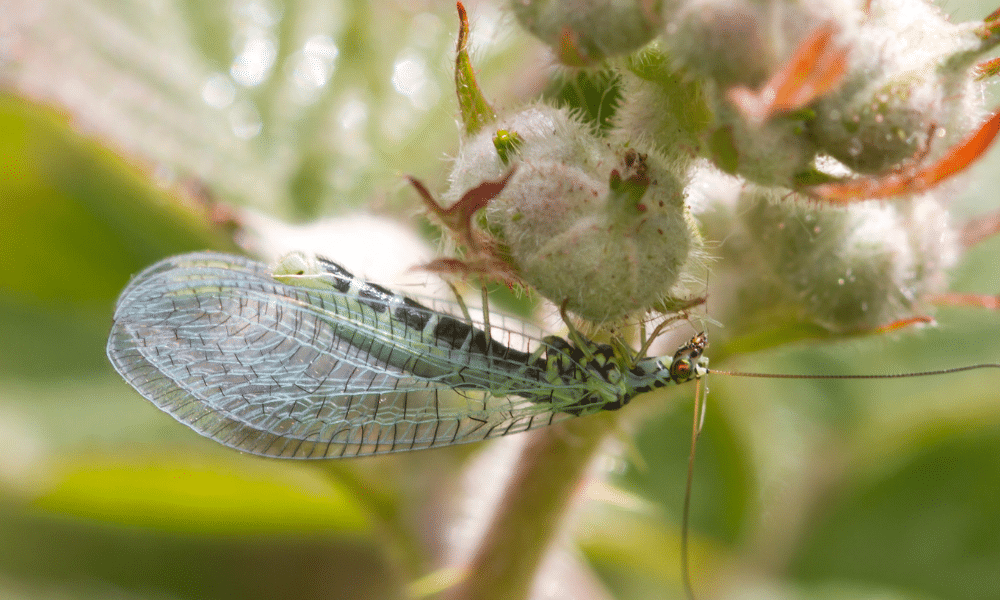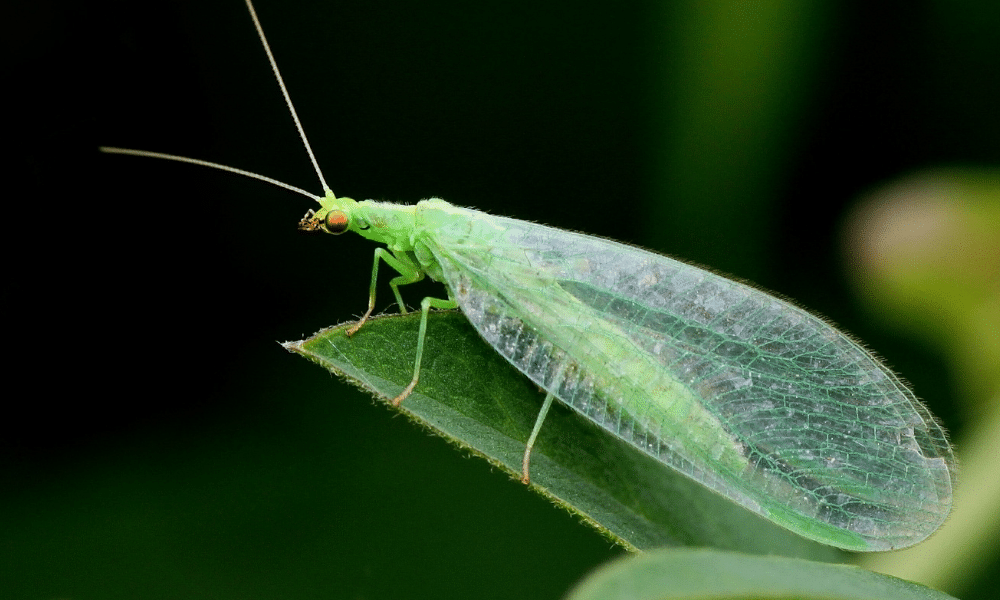When dealing with pests, you have a choice to make. It comes down to if you want to use organic methods or chemical sprays. If you choose to go with the organic approach, then one method you can use is to encourage beneficial predators. But is one such predator the lacewing? Do lacewings eat aphids or not?
Yes, lacewings do eat aphids. Lacewings are a natural way to combat aphids, mites, mealybugs, and leafhoppers in your garden. Using them could provide you with a long term organic pest control solution.
Do Adult Lacewings Eat Aphids?
Adult lacewings do not eat aphids. They prefer to feed on nectar, honeydew, and pollen. You can identify an adult lacewing simply by their appearance. They have very pale green wings with a light green body and bright gold eyes.
Adult lacewings like to hang out on flowers, especially at dusk. If you walk through your garden, you will most likely see them fly up if you brush a plant or two.

Adult lacewings are important in the life cycle of lacewings. When they are ready, adult lacewings will lay their eggs on the underside of leaves. After a few days, the eggs will hatch and the larvae of the lacewing will enter the world.
In the lacewing’s life cycle, however, the larva stage is the most beneficial for pest protection in your garden.
Do Lacewing Larvae Eat Aphids?
Yes, lacewing larvae do eat aphids. They also eat mites, thrips, whiteflies, mealybugs, and leafhoppers. As you can see, the lacewing larvae are very important and beneficial for pest control.
The larvae will continue to feast on aphids until it is ready to make a cocoon to transform into the next life stage. During the larva phase, the lacewing will eat up to 1,000 aphids a day!
After 2-3 weeks of feasting, the larvae will be ready to spin their cocoon. The lacewing will remain in its cocoon for 5 days before emerging as an adult lacewing.
The adult lacewing will search for nectar, honeydew, and pollen for food and energy before finding a leaf to lay eggs under. The eggs will hatch and the cycle will continue to repeat itself, keeping aphids under control all season long.
Lacewing larvae will eat a range of insects that are common pests in the garden including aphids, thrips, whitefly and leafhoppers.
How Do Lacewing Larvae Eat Aphids?
Lacewing larvae eat aphids and other pests by biting them and sucking the juices from them. Lacewing larvae are easily identifiable by their greyish-brown bodies and their pincher shaped jaws.
They will use this pincher jaw to bite into their prey’s body, leaving no room for escape.
Lacewing larvae are so efficient at searching out and eating aphids, that they are called “Aphid Lions”. From the moment they hatch, lacewing larvae begin their search for food.
Lucky for them, aphids tend to live under leaves or in the crevices of stems as well, making it easy for them to get a bite to eat. Lacewing larvae will feast on aphids and other pests for 2-3 weeks. After that time frame, they will spin themselves a silky cocoon.
Can You Purchase Lacewings?
It is easy to see why lacewings are extremely beneficial to your garden. You can purchase lacewing eggs online or at your local garden centre. Only specialist garden centres will stock them, however, so it’s always worth ringing ahead.
The lacewings will come in the egg stage. It is important to note that once the lacewing eggs hatch, they are very hungry. Lacewing larvae will turn to eat each other if there are no other food sources available.
Once you release your lacewing eggs, within 5 days they will hatch into larvae and begin feasting on pests inside your garden. Once these larvae become adult lacewings, they will lay new eggs and the cycle will repeat itself all season long.
Summary
Lacewings provide many benefits to your garden. Adult lacewings pollinate as they feed on the nectar and pollen of plants. They will lay eggs on the undersides of leaves. These eggs will hatch to lacewing larvae.
The larvae are wonderful for pest control and prevention in your garden. Lacewing larvae will eat aphids, mites, whiteflies, thrips, mealybugs, and leafhoppers. Lacewing larvae use their pincher-like mouths to attack and eat their prey and eat them.
Once they have grown for 2-3 weeks, they will enter a cocoon and emerge as an adult lacewing. You can purchase lacewings online or at your local garden store.







